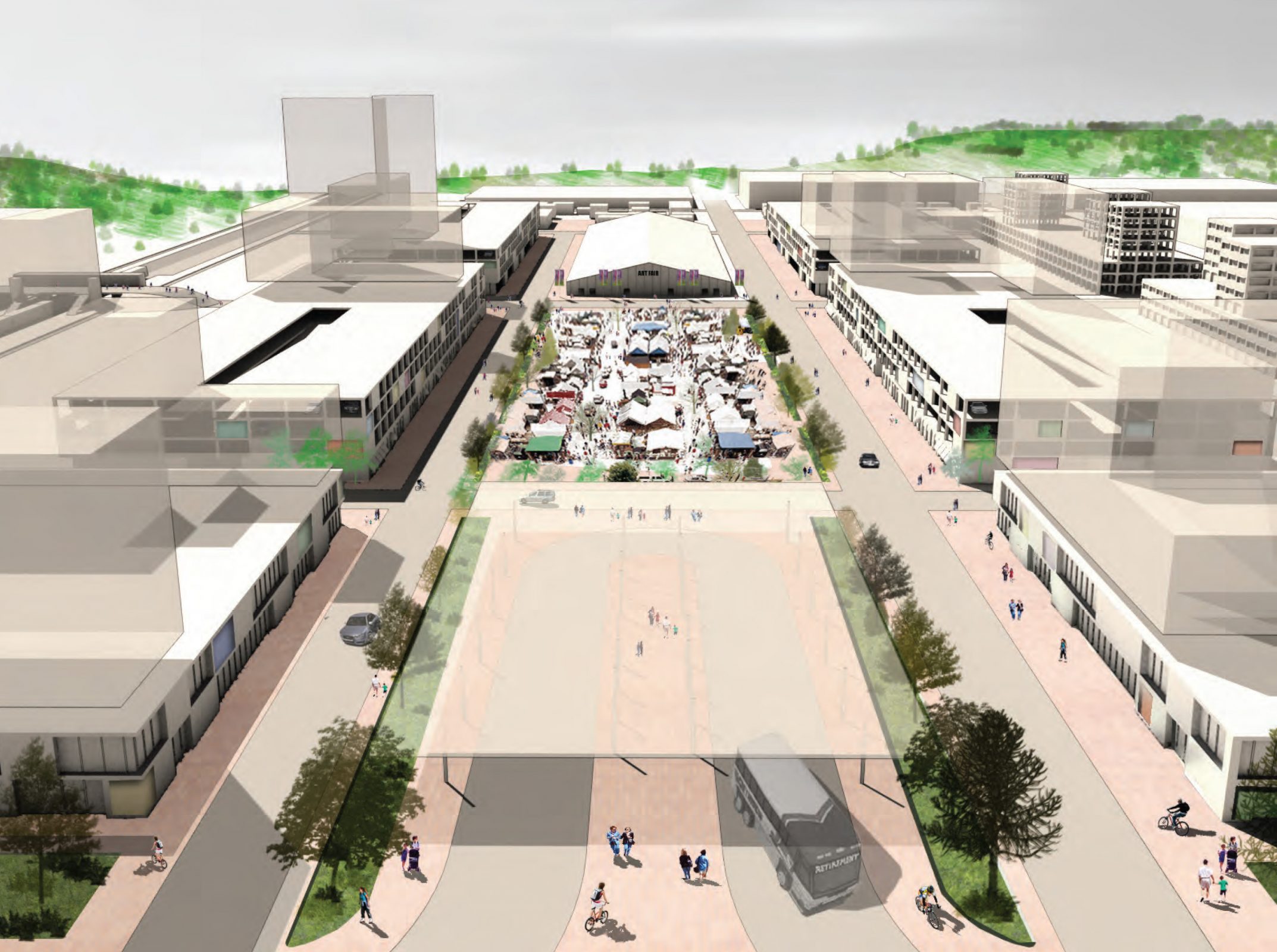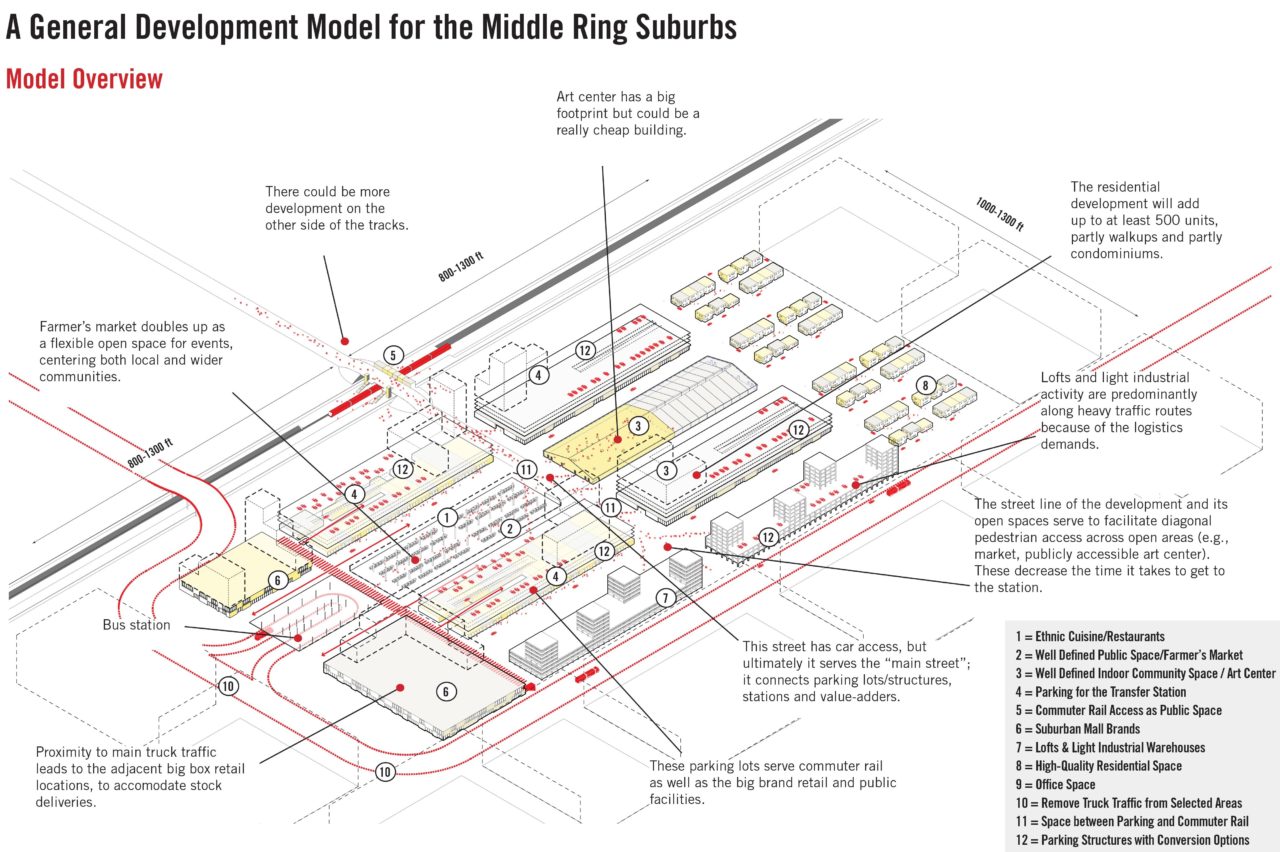Development Model for Middle Ring Suburbs

The Middle Ring suburbs are a category of older suburbs, caught between downtowns, the well-off exurbs, and outlying suburbs. Some of these Middle Ring suburbs also used to be referred to as the “Inner Ring.” Their socio-economic decline during the past 40 years has been documented as investment went to downtown centers and exurbs. Today, the Middle Ring suburbs may have become an area of opportunity for re-investment. The real estate crisis has shaved values in the exurbs by 20-40 percent, even in East Coast cities, while Middle Ring suburbs have retained their value remarkably well.
The basic premise for this particular study, and perhaps the reason why few successful developments have yet been carried out in the Middle Ring, is the need to depart from the development model usually associated with downtowns and exurbs. A novel development model may be essential for the Middle Ring because it differs from the previous two in its socioeconomic profile, location, infrastructure, and density. This study addresses the question of a new development model for the Middle Ring by analyzing its demographic and situational characteristics, as well as its strengths and weaknesses for development. It concludes by outlining the steps to be taken for development site selection and proposes a model to be implemented in such sites.

The model proposed here exists in an abstract, disregarding the limitations and constraints that any specific site would impose. Its general principle is to 1. introduce specific value-adding programs 2. attract and mix potential audiences with specific infrastructural re-wirings and 3. develop specific transportation solutions.
The model does not depend on spectacular architecture, or high-density development, or a big mix of uses - although these elements are all welcome. Such architectural criteria would see the finality of development as realizing something akin to a compact historic city. While such ambitions are acceptable, they are not suitable for a Middle Ring suburban transit-oriented development (TOD). The Middle Ring development research defines a specific type of built environment, it is neither bucolic (suburban) nor dense (urban) but a different creature altogether.
Location
Boston, Massachusetts, US
Year
2011
Team
Alexander D’Hooghe, Katrien Theunis, John Pugh
Clients
NAIOP - Commercial Real Estate Development Association
Mission ORG
Urban research, Feasibility study
Program
Commercial, Public Space, Residential, Infrastructure
Collaborators
Massachusetts Institute of Technology




